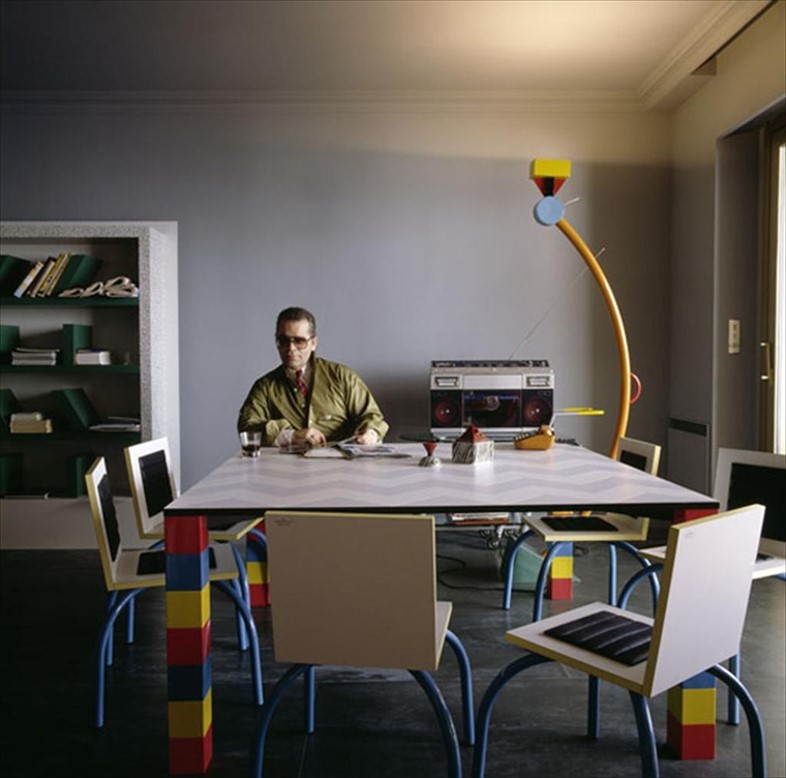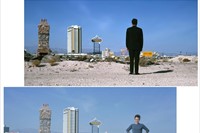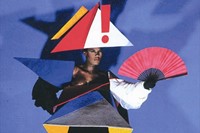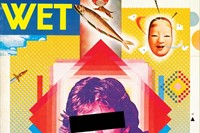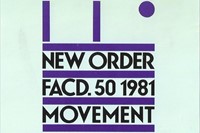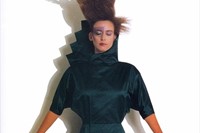AnOther considers the V&A's current exhibition Postmodernism: Style and Subversion, 1970-1990, including the works of Andy Warhol, Karl Lagerfeld, Peter Saville, Jean-Paul Goude, Guy Bourdin and Helmut Newton...
It was one of the most dramatic changes of direction ever experienced in the art world. Modernism, which had been considered a challenging and experimental art form, was losing momentum, and its comparatively restrained, almost inhibited style was no competition for the explosion of colour, humour, and complete freedom of expression, which was to follow. It was the early 1970s and Postmodernism had arrived. It was also nothing short of revolutionary, and subsequently divided opinion. Flirting with irreverence and rehashing original work, Postmodernism dismantled the boundaries between high and popular culture. It removed art’s status of superiority and, in turn, threw the credibility of the scene into question. “A lot of people said that post-modernism was a sign of retreat or exhaustion or failure,” admits Glenn Adamson, one of the curators behind the current exhibition, Postmodernism: Style and Subversion, which celebrates the controversial movement. “People thought it marked the death of the modernist utopian dream, and that all it had to offer was confusion, or the thrill or burning something down.”
Rippling across the cultural landscapes of fashion, art, film and music, one of the earliest examples of Postmodernism can be seen in the architecture of Philip Johnson. In 1978 when the architectural rules demanded abstinence from historical references, he proposed to cover Manhattan’s AT&T Building in pink granite and incorporate a roof in the shape of a traditional neo-Georgian wardrobe. As a consequence, Johnson became largely responsible for the demise of the stoic, International Style, which had dominated throughout the early stages of Modernism. “We stand at a place where maybe we haven't stood for 50 years, and that is a shift in sensibility so revolutionary that it is hard to grasp because we are right in the middle of it,” said Johnson in a 1979 interview with Time Magazine. “It is the watershed between what we have all been brought up with as the Modern, and something new, uncharted, uncertain and absolutely delightful."
Art quickly followed suit. Andy Warhol’s 'trivial’ 1981 Dollar Sign paintings brazenly made the connection between capitalism and art, while the simplicity of his style removed all trace of the artist’s workmanship, which only served to reinforce the opinion that art was becoming ‘low brow'. Fascinated by the concept of branding, Warhol also captured the iconic Chanel No.5 perfume in a series of nine, colourful silkscreens. In 1997 Warhol’s prints were revived by the fashion house itself and displayed on the streets of Paris. A move most likely initiated by Karl Lagerfeld, a proponent of Postmodernity whose design approach transformed Chanel from modest fashion house to cult brand status. “In a big part of the world, people cannot read French or English – but are great in remembering signs,” the visionary once said, referring to the classic double 'c' emblem he splashed across the collections.
Another of the exhibition’s many highlights, is the work of graphic designer Peter Saville. At the time, record sleeves, posters and music magazines were powerful marketing tools, but Saville dared to go against the contemporary grain when he used a 19th century still life by Henri Fantin-Latour for New Order’s 1983 Power, Corruption and Lies album cover. It had a cultural impact on a scale which seems almost inconceivable today. “Pop culture used to be like LSD – different, eye-opening and reasonably dangerous” commented Saville. “The things that pop music was there to do for us have all been done... there's nothing to rail against now. When I was 15, in the North-west of England.... the record cover to me was like a picture window to another world. Seeing an Andy Warhol illustration on a Velvet Underground album was a revelation.”
But if you could link a face to Postmodernism, it would be Grace Jones. More than a pop star and supermodel, Jones was an enigma, whose fusion of androgyny and sex appeal captivating both the art sphere and public alike. Famously shot by anyone who was anyone including Warhol and Newton, it was stylist and photographer Jean-Paul Goude who created some of her most memorable images, including the iconic picture of Jones in a maternity dress – the lead image for the V&A's exhibition.
Identifying the key moments that shaped Postmodernism, the exhibition has been divided into three chronological sections. The first section explains the emergence of the movement through architecture before leading on to the concept of bricolage, examining designers such as Vivienne Westwood, who recycled the aesthetics of Punk into haute couture. Moving on to the club culture of the 80s, audio installations accompany the work of legendary fashion photographers, Guy Bourdin and Helmut Newton. Finally, the exhibition will look at how money and excess infiltrated the scene.
What will history make of Postmodernism? Is it style over substance? Is it style without substance? Perhaps Warhol summed it up best: “Art is whatever you can get away with.”
Postmodernism: Style and Subversion is currently showing at the V&A and runs until January 15 2011. The exhibition is accompanied by a 320-page hardback book.
Text by Fiona Cook
